Bistolida stolida (Linnaeus, 1758)
Stolid cowry, 17-36mm
The
form of Bistolida stolida found at Kwajalein is
unique. Throughout most of its Indo-Pacific range, B. stolida’s
shell has a dark brown blotch on a blue-gray background. Those from Kwajalein
tend to be distinctly smaller and have a reddish brown blotch on a light reddish
brown background. This variety has been given its own subspecific name, Bistolida
stolida kwajaleinensis. The “ensis” suffix on scientific names
is generally used to indicate a place for which the species is named. This subspecies
may be restricted to Kwajalein; most specimens of Bistolida
stolida from nearby Enewetak Atoll have the typical blue-gray background,
although a few were observed that tended toward the kwajaleinsis form.
This species is mostly a lagoon dweller, living on subtidal interisland reefs
or algae patches such as those in the lee of Ebwaj and North Loi at depths ranging
from about 2 to 30m. Specimens can also be found on some near-shore lagoon pinnacles
such as those east of the Mar Fill end of Kwajalein. Occasionally, specimens
have been found in shallow water on the seaward reef, or on shipwrecks, such
as the ones near G-Buoy and off the edge of the reef at North Loi. Some have
suggested that the reddish brown color might be due to incorporation of rust
from Kwajalein Atoll's shipwrecks, but this is certainly not the case. Other
cowries occasionally do have rust embedded in the shell, but only a few specimens
found directly on the wrecks, and not even all of those, show this blotchy rust
color. In Bistolida stolida kwajaleinensis, all
shells have a very smooth, consistent reddish brown color whether or not they
were found anywhere near shipwrecks. Various forms of Bistolida stolida
are known throughout the Indo-Pacific with the exception of the Hawaiian Islands.
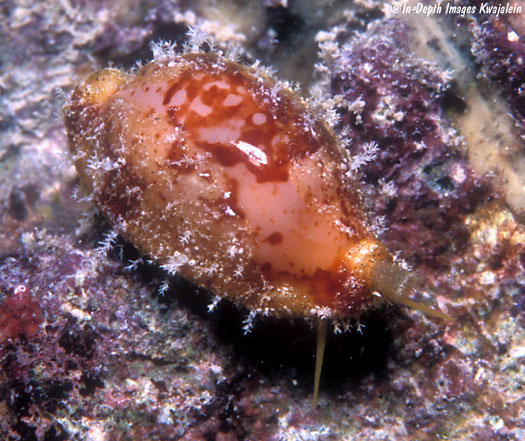
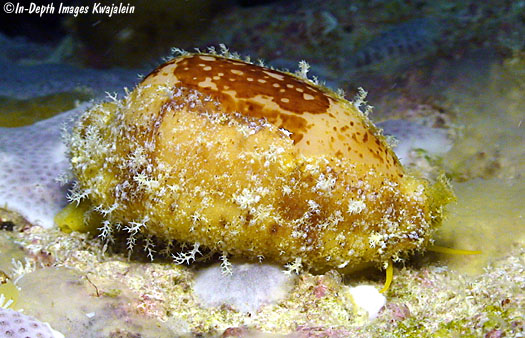
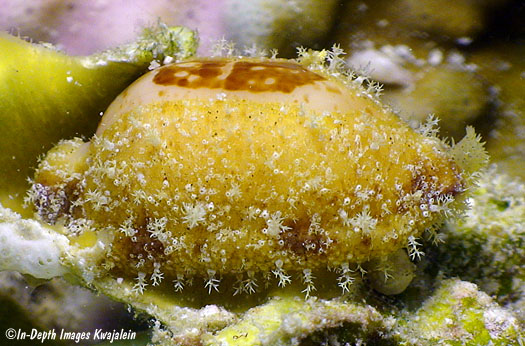
The
mantle and foot of Bistolida stolida is mostly yellow, and the animal
seems to feed on a yellow sponge living beneath rocks.
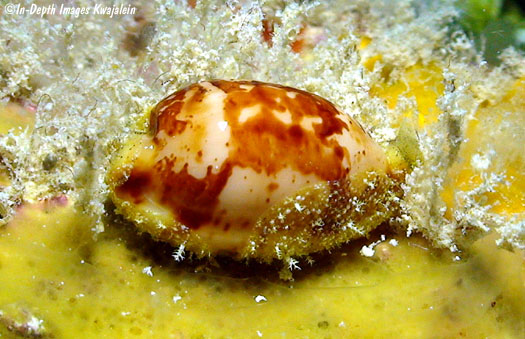
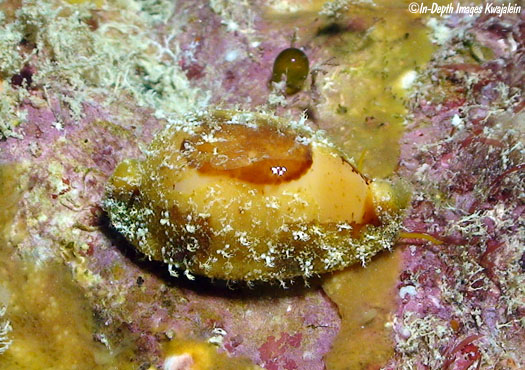
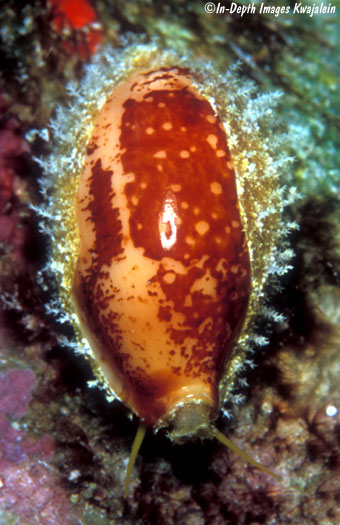
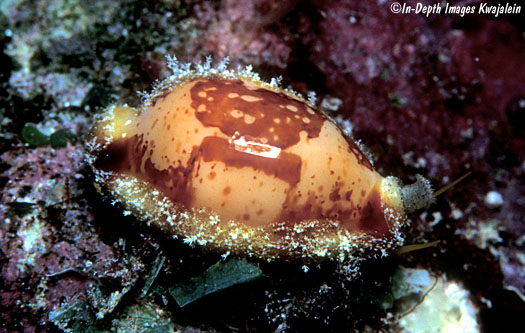
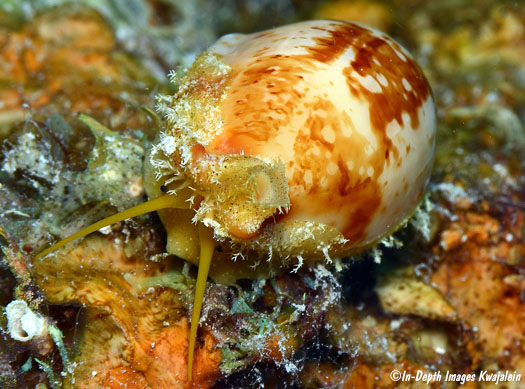
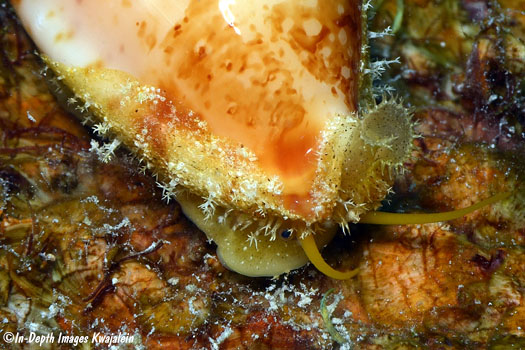
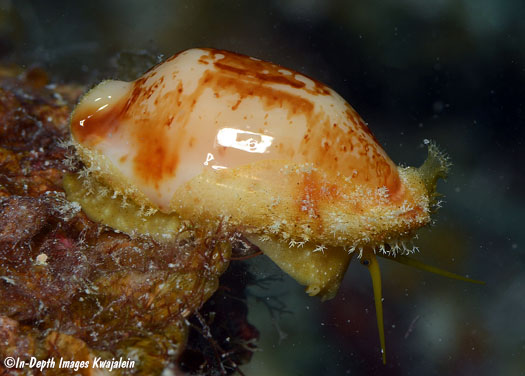
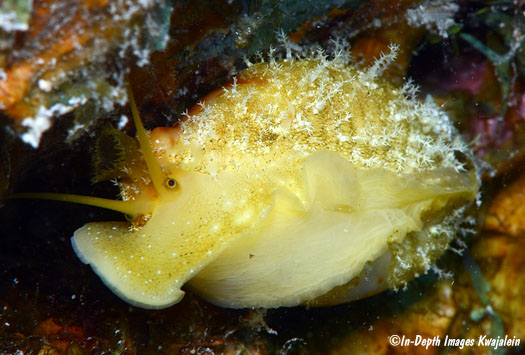
The dark blotch can occasionally
extend across most of the shell.
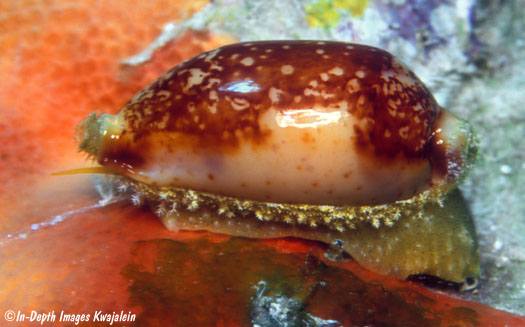
Pattern varies.
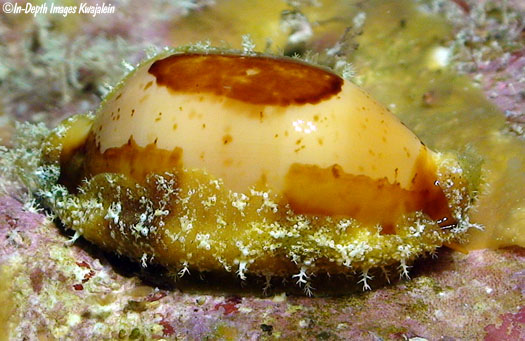
The
stretched-out foot of the next specimen is protecting its egg mass.
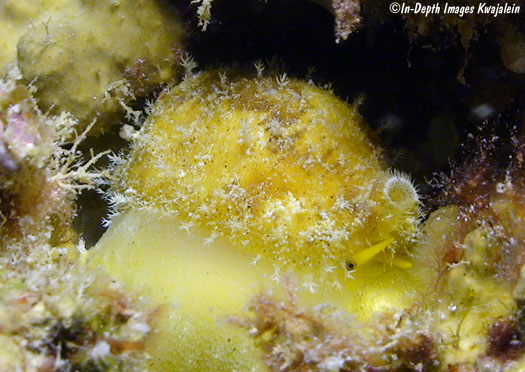
Here's one that has pulled off
its egg mass a bit, revealing the cluster of eggs. It looks as though the larvae
within the capsules are well developed and probably hatched soon after this
photo.
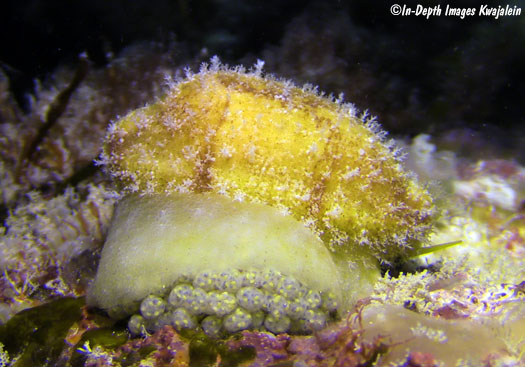
A slightly young specimen lacks
the blotch entirely. This shell nearly has its adult structure, so the dark
dorsal blotch must be laid down on the shell late in development.
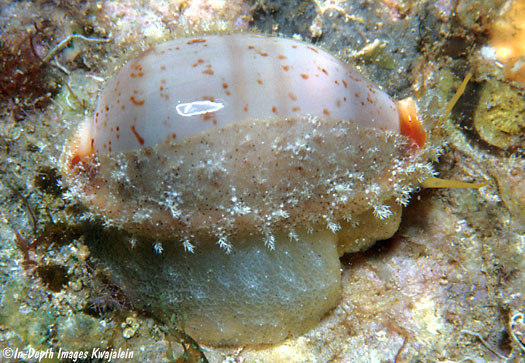
A very young thin specimen is nearly hidden by its yellow mantle.
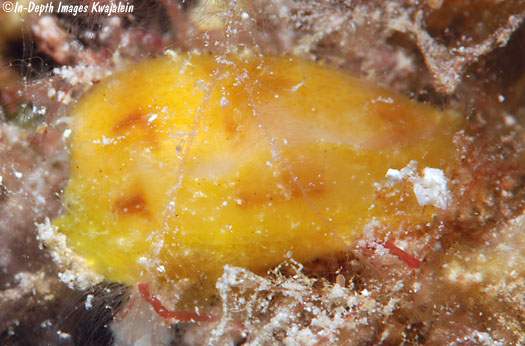
Adult shells from Enewetak Atoll
were generally larger than those from Kwajalein, and they varied from similar
in color to Bistolida stolida kwajaleinensis to the more blue background
of the more widespread variety, Bistolida stolida stolida. The Enewetak
specimen below has a dark brown blotch (less reddish than those from Kwajalein)
and the background is a very light tan. The Enewetak specimen in the two photos
immediately following has a more typical bluish gray background.
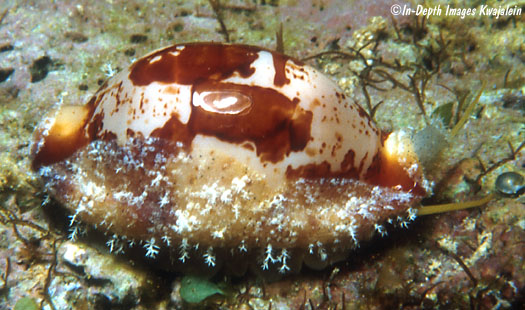
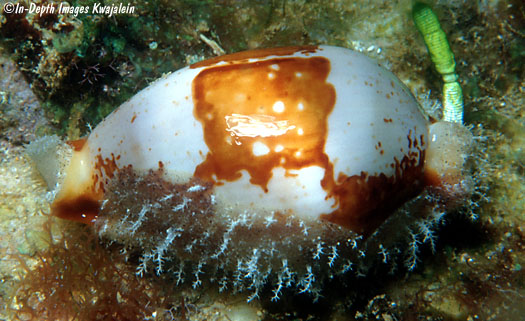
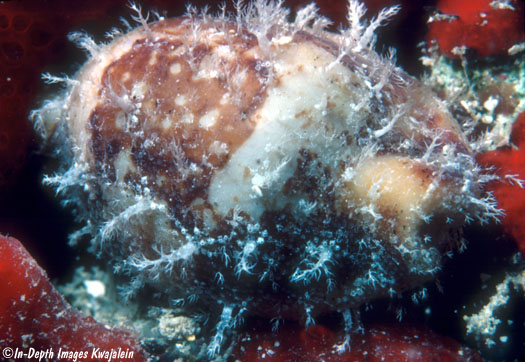
This Enewetak specimen was considerably
more rostrate, with its anterior and posterior ends a bit puckered and turned
up, than is typical of this species. This specimen was found inside a concrete
barge aground on an Enewetak lagoon pinnacle, just into the lagoon from an east
reef deepwater pass.
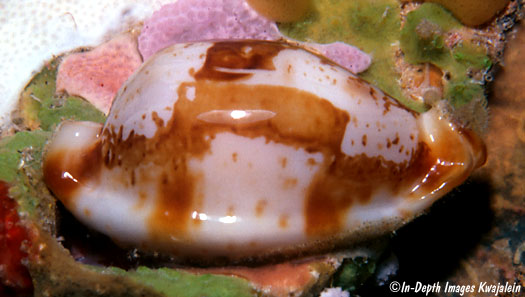
Shells of typical Bistolida
stolida kwajaleinensis from Kwajalein Atoll. The first one is a 25.95mm
shell from 1988.
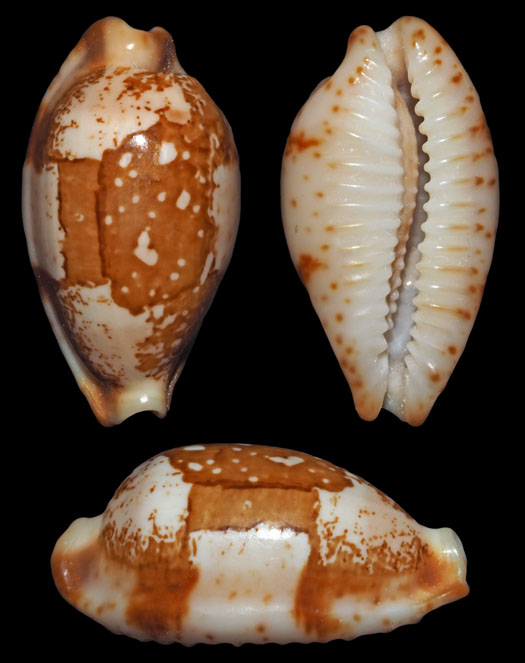
28.7mm shell, 10 September 2007
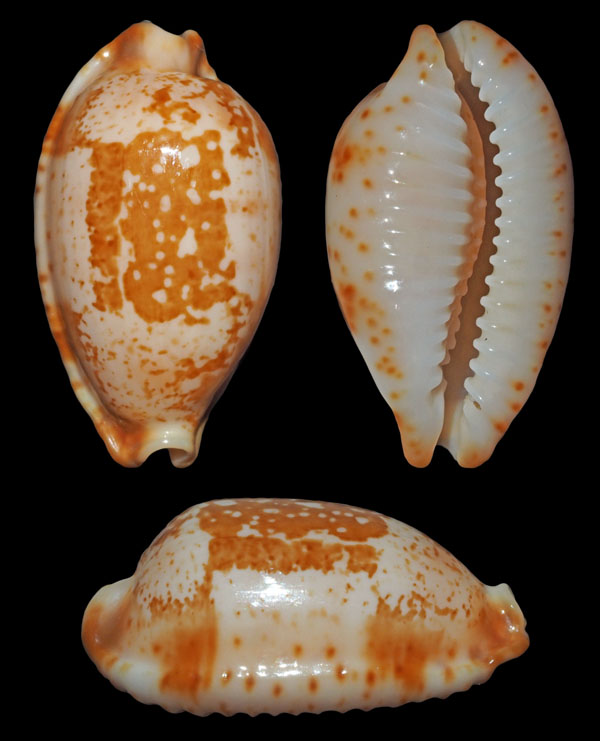
17.6mm shell, 9 March 1998
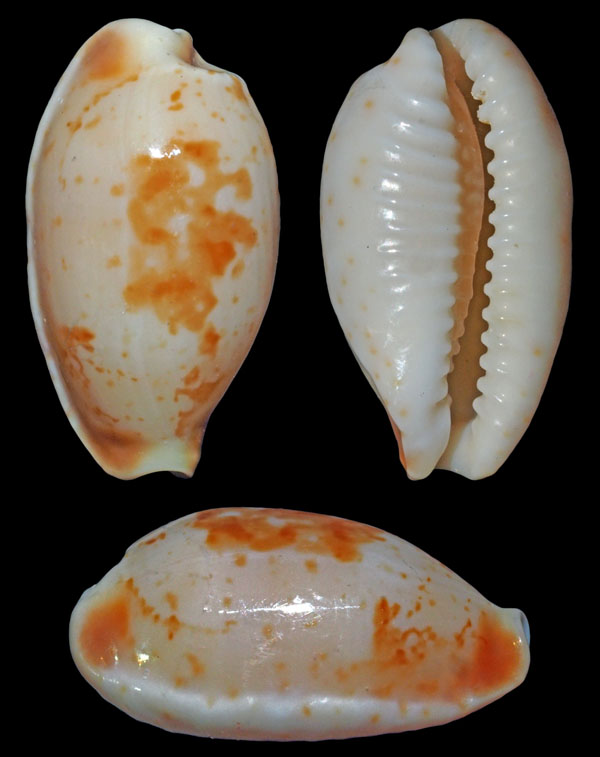
This 34.15mm shell was found empty
on the deck of a lagoon bottom shipwreck at a depth of about 36m.
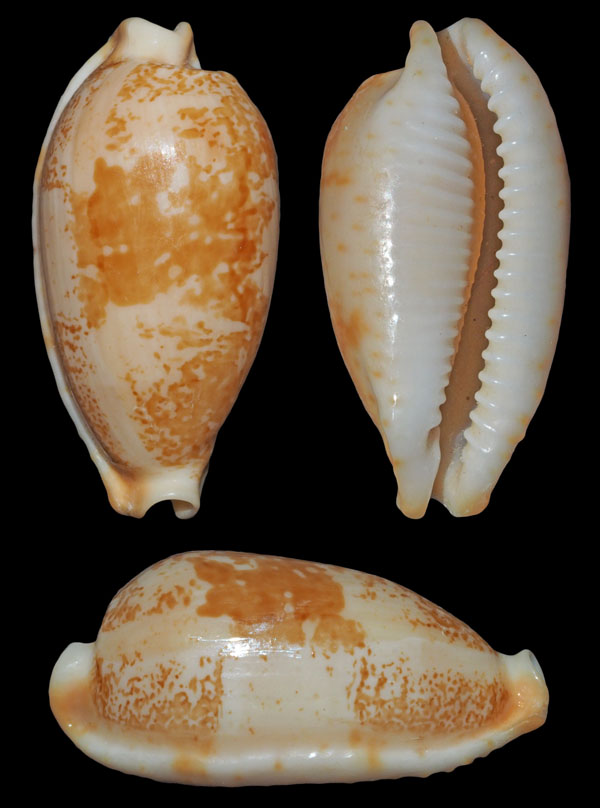
The 34.15 and 17.6mm specimens
together.
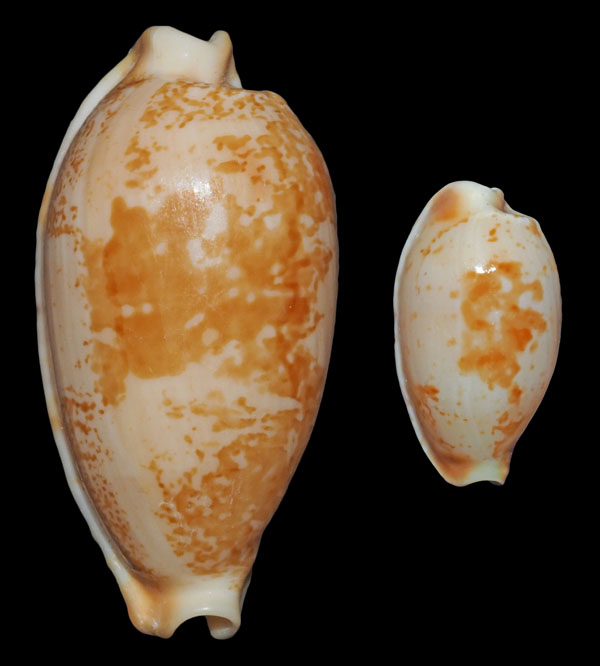
The next specimen is from Enewetak
Atoll and shows more of the bluish background more typical of Bistolida
stolida stolida. It measured 36.1mm and was found on 25 January 1982.
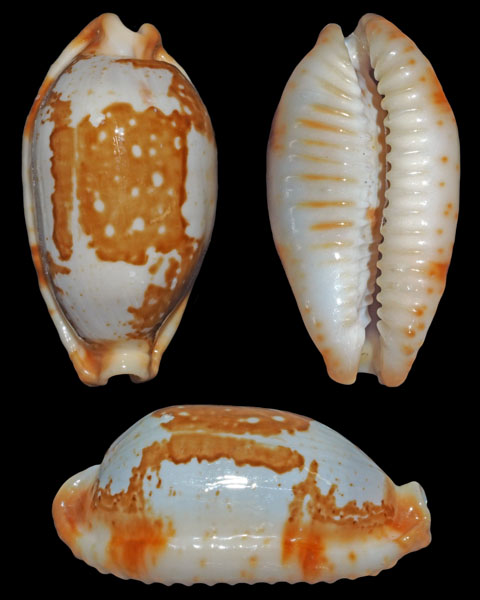
The somewhat rostrate 26.55mm specimen
below came from Ujae Atoll, a bit west of Kwajalein.
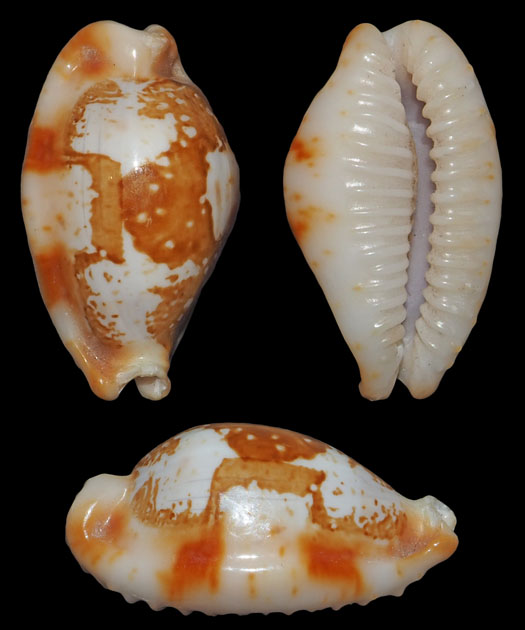
Created
1 April 2008
Updated 2 April 2024
Back to
cowries
Kwajalein Underwater Home




























